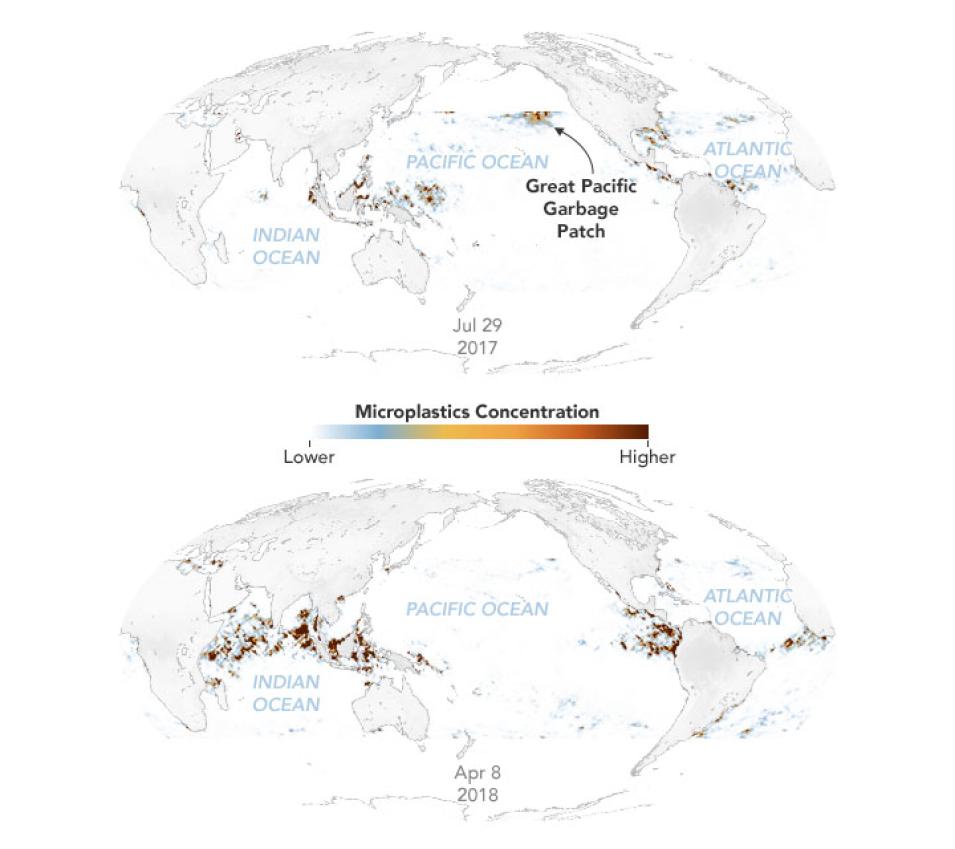This research is the first to map ocean microplastics over such a large area and is the first to map concentrations at a high temporal resolution, revealing seasonal variations in microplastic concentrations. In the Great Pacific Garbage Patch for example, microplastic concentrations are higher in the summer and lower in winter. They saw similar seasonal variation in garbage patches in other gyres too, due to more vertical mixing when the temperatures are cooler. Ruf and Evans also did a time-lapse of all of the major rivers in the world and saw a large amount of microplastics coming from the Yangtze and Ganges.
Another innovative way of detecting ocean debris and plastics in the ocean was recently developed by NASA’s Interagency Implementation and Advanced Concepts Team (IMPACT). The research team used machine learning, open-source tools, and imagery from Planet Labs to find debris in the ocean. They trained a model, based on ground truth observations, that can automatically detect and label marine debris globally. The open-source code they developed (available on the IMPACT GitHub) could also be used to detect other phenomena on Earth using satellite imagery.
References
Bates, S. (2021). Scientists Use NASA Satellite Data to Track Ocean Microplastics From Space. NASA Earth Science News Team. June 28, 2021.
CYGNSS (2021). CYGNSS Level 3 Microplastic Concentration Retrievals Version 1.0. PO.DAAC, CA, USA. doi:10.5067/CYGNS-L3M10
CYGNSS (2018). CYGNSS Level 2 Science Data Record Version 2.1. PO.DAAC, CA, USA. doi:10.5067/CYGNS-L2X21
Evans, M. C. & Ruf, C. S. (2021). Toward the Detection and Imaging of Ocean Microplastics With a Spaceborne Radar. IEEE Transactions on Geoscience and Remote Sensing. doi:10.1109/TGRS.2021.3081691
My NASA Data (2020). Ocean Circulation Patterns: Garbage Patches Story Map.
NASA IMPACT Unofficial (2021, June 8). Marine Debris: Finding the Plastic Needles.
Shah, A., Thomas, L. & Maskey, M. (2021). Marine Debris Dataset for Object Detection in Planetscope Imagery, Version 1.0, Radiant MLHub. doi:10.34911/rdnt.9r6ekg
